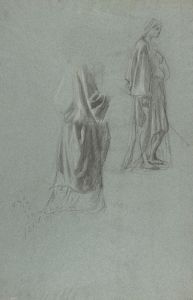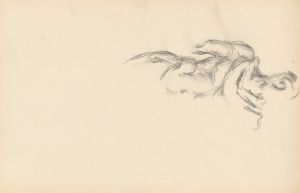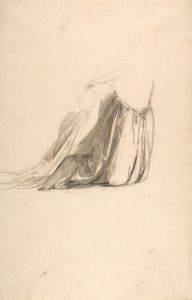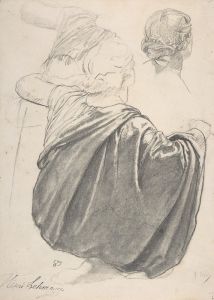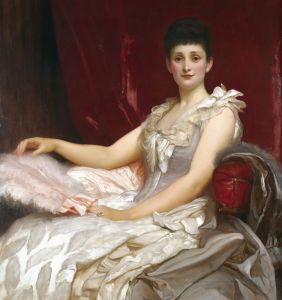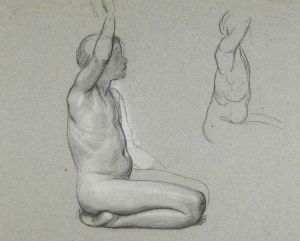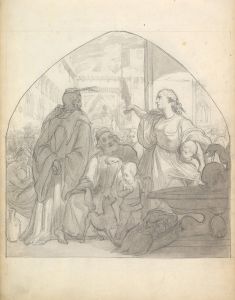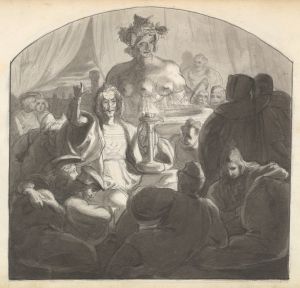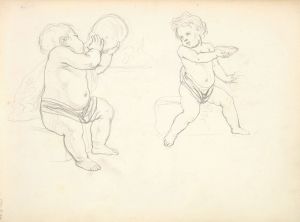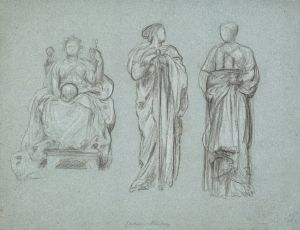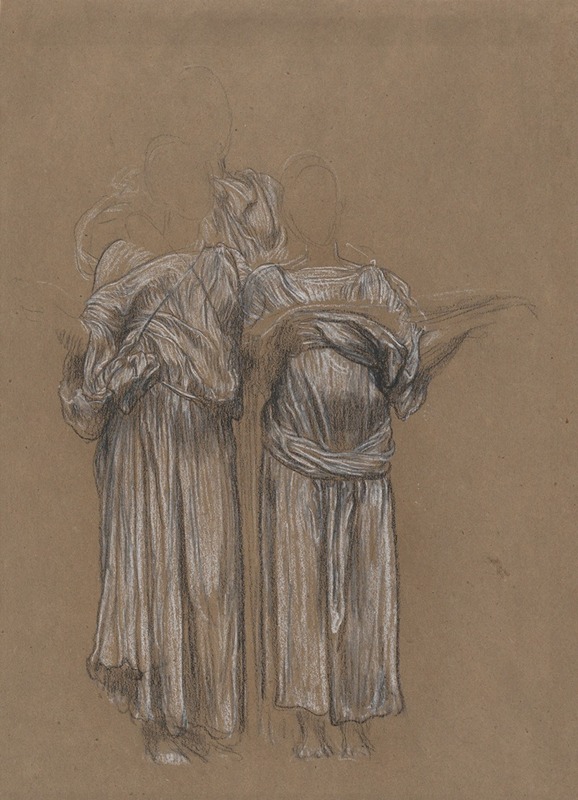
Study of Three Standing Draped Female Figures for ‘Music’
A hand-painted replica of Frederic Leighton’s masterpiece Study of Three Standing Draped Female Figures for ‘Music’, meticulously crafted by professional artists to capture the true essence of the original. Each piece is created with museum-quality canvas and rare mineral pigments, carefully painted by experienced artists with delicate brushstrokes and rich, layered colors to perfectly recreate the texture of the original artwork. Unlike machine-printed reproductions, this hand-painted version brings the painting to life, infused with the artist’s emotions and skill in every stroke. Whether for personal collection or home decoration, it instantly elevates the artistic atmosphere of any space.
"Study of Three Standing Draped Female Figures for ‘Music’" is a preparatory drawing by the renowned British artist Frederic Leighton, 1st Baron Leighton (1830–1896). Leighton was a leading figure in the Victorian art world and is best known for his association with the Aesthetic Movement, which emphasized the visual and sensual qualities of art over its narrative or moral content.
This particular study was created as part of Leighton's preparatory work for a larger composition titled "Music," which was intended to be a mural. The drawing features three female figures standing in a row, each draped in flowing garments that highlight Leighton's exceptional skill in rendering the human form and fabric. The figures are depicted in various poses, showcasing the artist's meticulous attention to the naturalistic portrayal of movement and drapery.
Leighton often used such studies to explore different compositional elements and refine his ideas before committing them to the final work. These preparatory sketches were crucial to his process, allowing him to experiment with the arrangement of figures, the fall of light and shadow, and the intricate details of clothing and anatomy. The study of draped figures was a common practice among artists of the time, as it provided an opportunity to practice and perfect the depiction of complex folds and textures in fabric.
The "Study of Three Standing Draped Female Figures for ‘Music’" is executed in pencil and chalk on paper, mediums that Leighton frequently employed for their versatility and ease of use. The drawing is characterized by its delicate lines and subtle shading, which give the figures a sense of volume and three-dimensionality. The careful rendering of the drapery suggests a deep understanding of how fabric interacts with the human body, a skill that Leighton honed through years of rigorous academic training and observation.
Frederic Leighton's work, including this study, reflects his classical education and his admiration for the art of the Renaissance and ancient Greece. His ability to blend classical ideals with contemporary techniques made him a prominent figure in the British art scene of the 19th century. Leighton's contributions to art were recognized with numerous accolades, including his election as President of the Royal Academy of Arts in 1878, a position he held until his death.
The study is part of the collection at the Leighton House Museum in London, which was the artist's former home and studio. The museum houses a significant number of Leighton's works, providing insight into his artistic process and the breadth of his oeuvre. The "Study of Three Standing Draped Female Figures for ‘Music’" is an excellent example of Leighton's preparatory work and his dedication to the mastery of form and composition.
In summary, "Study of Three Standing Draped Female Figures for ‘Music’" by Frederic Leighton is a testament to the artist's skill and his meticulous approach to the creation of his larger works. It offers a glimpse into the preparatory stages of his artistic process and highlights his ability to capture the elegance and complexity of the human figure and drapery.





